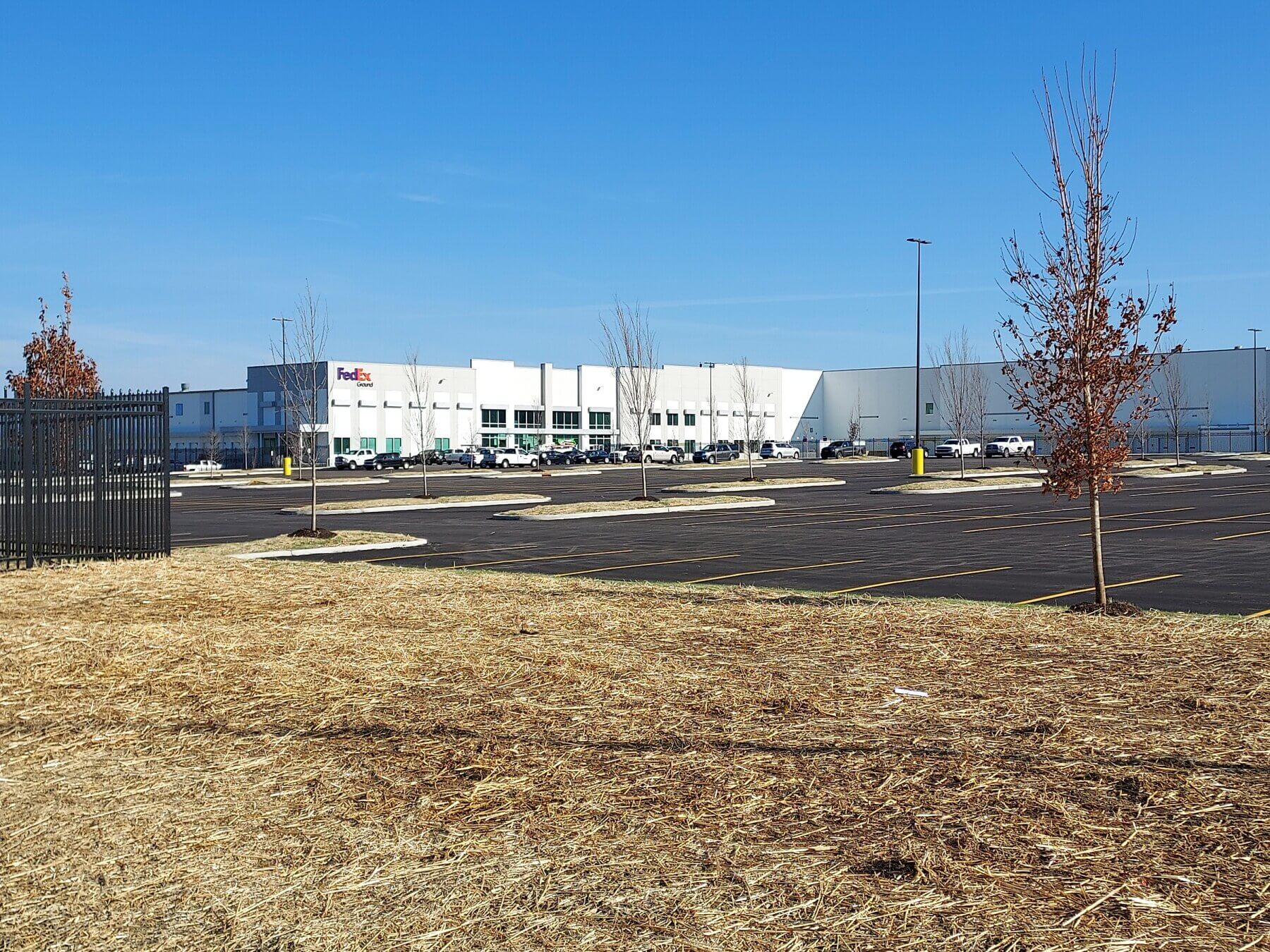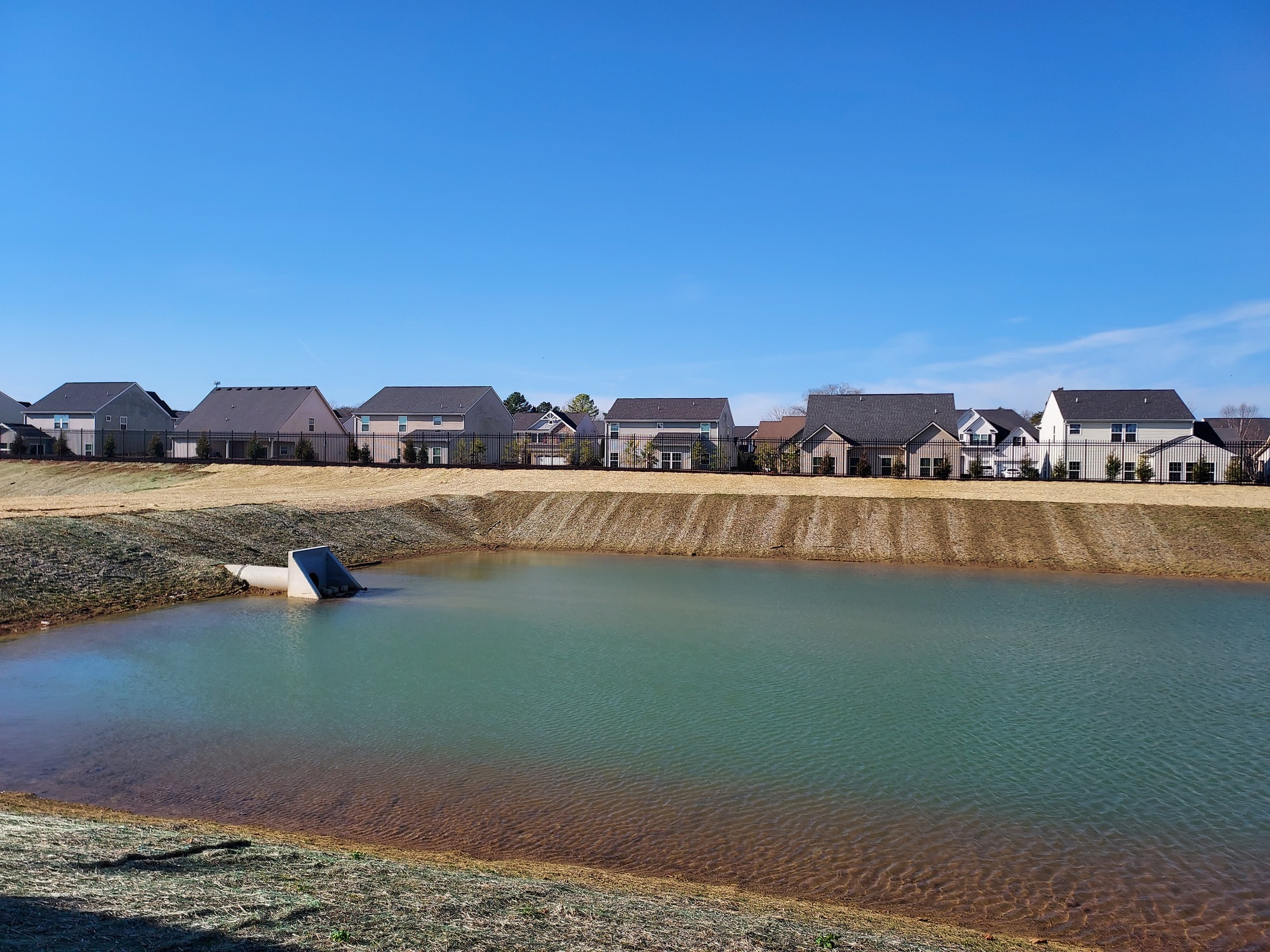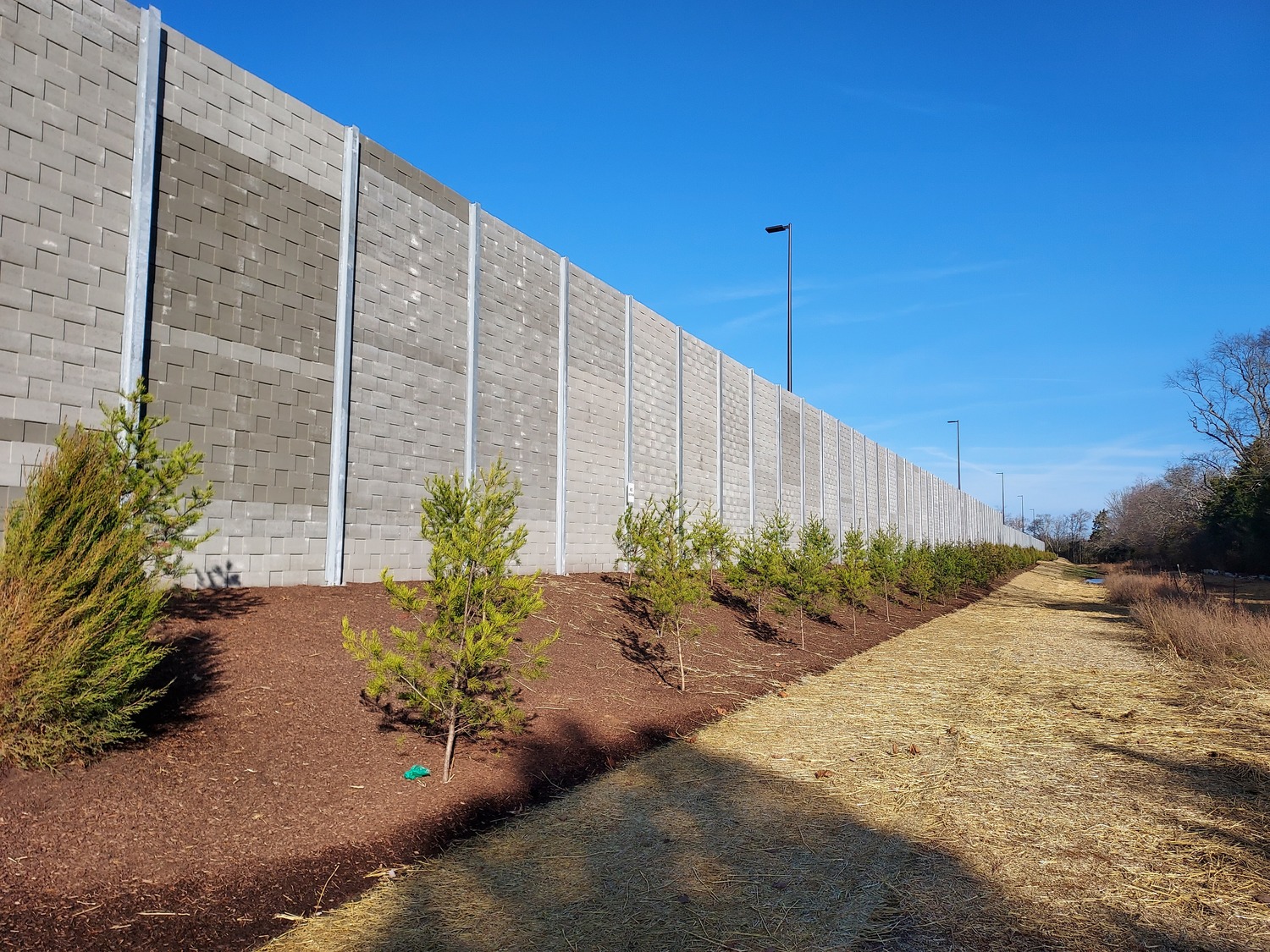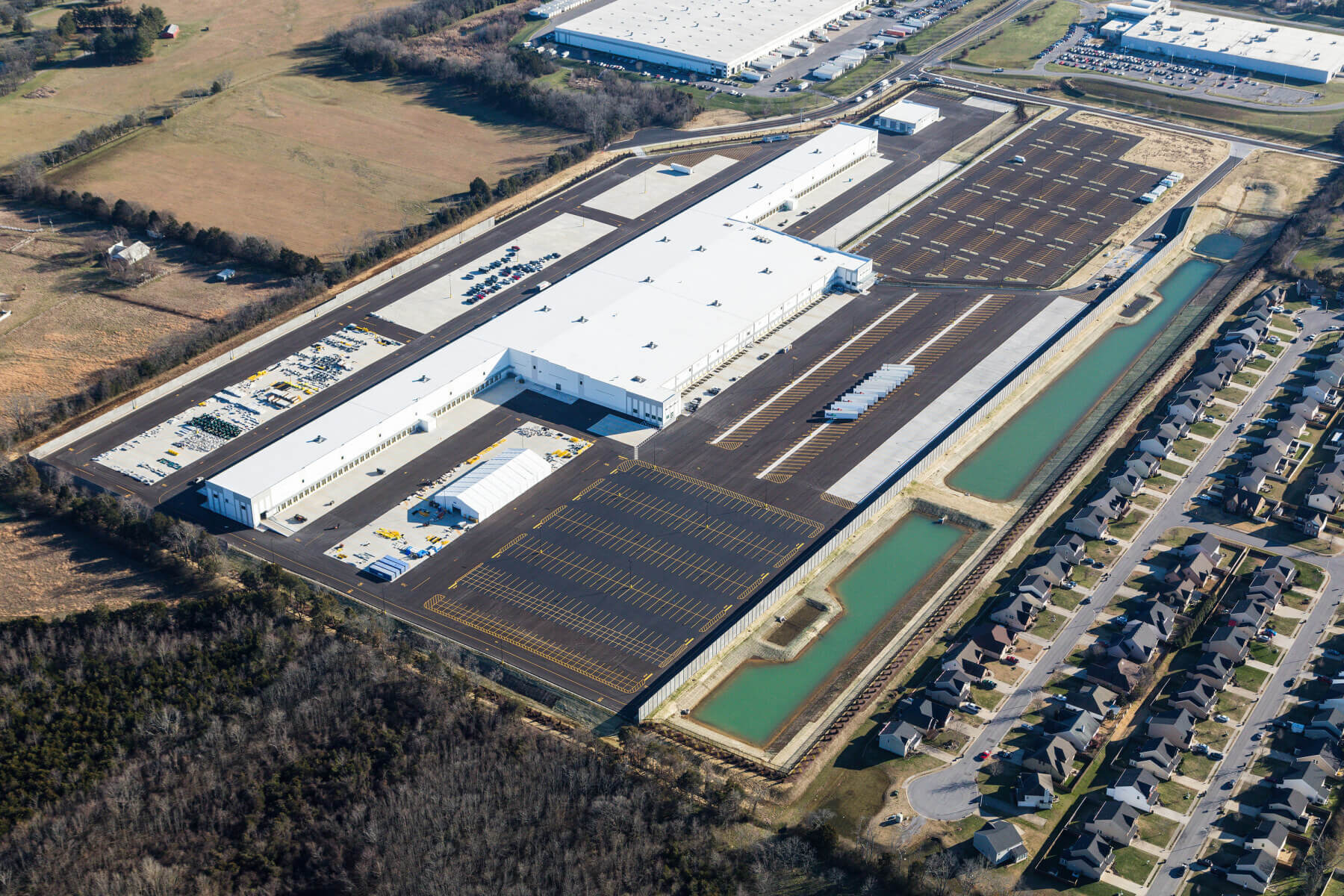
Getting the Special Treatment
Our Land Planning team provided site design, permitting, and construction observation services directly for Prologis, including in-house surveying, civil engineering, and landscape architecture. Our scope of work included leading the client through a complex permitting process, which involved working with multiple utility jurisdictions and local government agencies.
We also provided special treatment for screening the existing, adjacent, single-family home subdivision, including up to 22-foot-high sound walls, enhanced fencing, berm, and landscaping, as well as placing the retention ponds between the site and the residential backyards.


Expediting the Design Through Technology
Our survey services included an ALTA survey as well as final plat, right-of-way, and easement documents for off-site public infrastructure, which included 1,500 linear feet of new public roadway extensions and a 2,600-linear-foot extension of public sanitary sewer lines across the site. We utilized LIDAR (light detection and ranging) technology to quickly gather topographic information on the 78-acre site, which accelerated our delivery of the survey, allowing the design to begin sooner.
